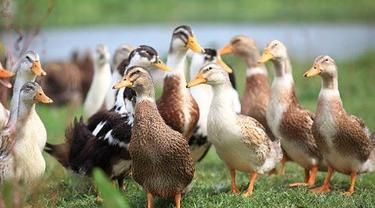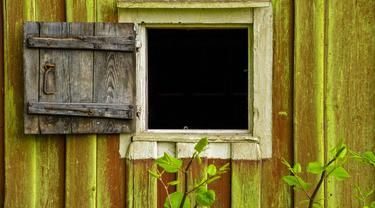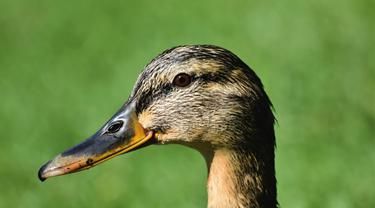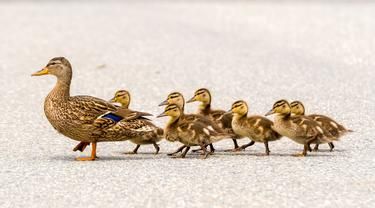laying can be a lucrative opportunity. Duck farming has many advantages in terms of business. In addition to the high demand for duck meat, duck eggs are also a promising commodity for duck breeders.
Duck eggs that are rich in nutrients are in great demand in the market. The method of raising laying ducks is also considered superior to raising chickens. This makes many people want to try how to raise laying ducks. Knowing how to raise laying ducks can help novice breeders to get maximum livestock yields.

How to raise laying ducks needs to be prepared as well as possible for encouraging results. How to raise laying ducks starts with determining the budget, preparing the cage, selecting seeds, caring for them, to harvesting.
Here are 7 ways to raise laying ducks summarized
1.Make a budget analysis
The first way to raise laying ducks is to determine a budget. Breeding laying ducks certainly requires a large budget. You need to record a budget for various needs ranging from seeds, cages, feed, and periodic maintenance.
Record initial capital analysis. This initial capital includes the purchase of seeds, making cages, renting land (if not own land) and the price of feed. After knowing the amount of initial capital needed, you can adjust it to the budget you have at that time. Capital can be obtained from personal money or loans.
After determining the initial capital, you can calculate the maintenance costs and the profits after the duck eggs are ready to be harvested.
2. Prepare a place for raising livestock

After determining the capital, prepare a place for raising livestock. Duck breeding sites should be on dry, clean, and comfortable land for ducks. The place for breeding must also have adequate lighting.
Make sure the land is large enough and far from residential areas. Make a proper cage for ducks to live in. Adjust the land to the number of ducks to be raised. Usually, raising ducks starts with 100 heads. For duck cages, ideally it has a size of 1m2 for two ducks.
3. Cage making

There are three types of cages that are widely used for duck farming. These cages are stage cages, litter cages, and battery system cages.
The stage cage is shaped like a stage and is above the ground. This keeps the ducks' shelter dry and free from disease. The litter cage consists of a square fence, along with closed and open spaces. This cage is known as a cage that is cheaper to manufacture.
While the battery cage is shaped like a stage cage but is tiered between 3-4 levels. The base is tilted 30 degrees forward to make it easier to roll the hatched eggs.
You can choose the type of cage according to your needs, land, and capital. Duck cages should be kept dry. The main wall of the cage should be slightly closed so that the ducks don't see other animals that could make them nervous.
The ideal temperature in a duck coop is 35 to 40 degrees Celsius. The cage must also have a clean place to eat and drink. Make sure the ducks have enough space with each other.
4. Choosing duck seeds

The next method of raising laying ducks is the selection of seeds. Laying duck seeds are usually available when the duck is still small or the duck is ready to lay eggs. The price also varies depending on the type and quality.
Be sure to choose a duck that is healthy and comes from superior breeds. In raising ducks, duck seeds are also called Day Old Duck (DOD). These seeds can be purchased from 1-10 days after hatching. Characteristics of a healthy duck is to have a weight of 38-40 grams, agile and aggressive movements, no physical defects, shiny beak, good voice, and smooth fur.
5. Feed selection
To be able to produce quality eggs, laying ducks need to be given the appropriate feed. Duck feed must meet the needs of protein, energy, and minerals. Duck feed can be obtained from the store in the form of concentrate.
Duck feed can also be obtained from other natural ingredients such as vegetables, seeds, snails, fish, chicken waste, insects, or other mixtures.
6.Duck care

In addition to feeding, periodic maintenance of ducks is also very important. Duck cages should be cleaned from time to time to keep them clean and moist. The growth of ducks can also differ from each other. So you need to group the ducks by size, to prevent the bigger ducks from hurting the smaller ones.
It is also important to separate sick ducks and treat them. Also make sure the duck coop gets enough sunlight.
7. Duck egg harvest

Ducks will start laying eggs at the age of 5 to 7 months. At the beginning of this period, the number of eggs may not be stable. Ducks will lay eggs every day and you can harvest them every day.
In the first 5 to 7 months, in 100 birds, you may get 30 to 50 eggs. The number will increase when the age of the duck begins to be more productive.
8. Nutrients in duck eggs

Duck eggs have higher nutrition than chicken eggs. In addition to its larger size, the nutrients it has are also far superior. Thus, you will get more nutrients in one duck egg.
In a comparison of 100 grams of duck eggs and chicken eggs for example. Duck eggs have 13 grams of protein while chicken eggs have 12 grams of protein. Duck eggs meet 90% of the daily intake of vitamin B12 while chicken eggs only meet 23% of the daily intake. In addition, the content of selenium, iron, vitamin D, and choline in duck eggs is also higher than chicken eggs.
However, duck eggs also contain higher amounts of calories, fat, and cholesterol. So it is important to keep consuming it in moderation and not in excess.
Hi, @meurah-darmafarm,
Thank you for your contribution to the Blurt ecosystem.
Your post was picked for curation by @onchain-curator.
Please consider voting for our Upkeep Proposal by Symbionts.
Thanks